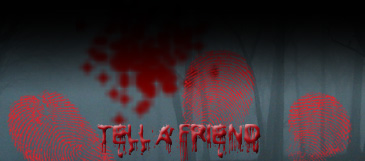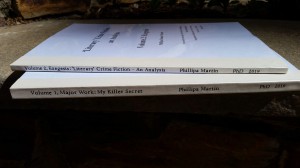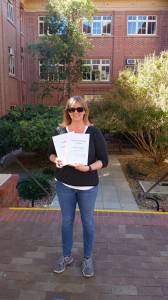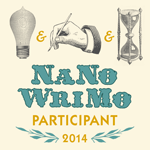Is there any ‘literary’ in Liane Moriarty’s Big Little Lies?
Of course, one of the big requirements of a PhD in creative writing is to analyse sample texts in line with your exegesis topic. The texts I’ll be examining for ‘literary’ features are Peter Temple’s Truth, Martin Amis’s Night Train, Benjamin Black’s Christine Falls and Gillian Flynn’s Gone Girl. However, I’m also expected to read widely in my genre (crime fiction), looking at both ‘popular’ crime novels and the more literary-styled crime novels. Which brings me to Liane Moriarty’s Big Little Lies.
While on the surface this book is ‘popular’ fiction – it’s written by a best-selling author, after all — when we break down some of the elements that are classed as “literary” Big Little Lies actually ticks some boxes.
While there are many characteristics that are considered ‘literary’ for the purpose of this blog I’ll be focusing on three of the elements I’m looking at for my PhD exegesis.
But first I’ll look at the big question…is Big Little Lies a crime novel? Of course, like many things it depends on your definition. It’s certainly not a police procedural (there is a police officer, but he’s only mentioned in passing), yet the mystery element is at the fore. Interestingly, however, the focus isn’t on whodunit, rather it’s on who’s dead? In the opening scenes we know someone has been murdered, then Moriarty takes us back six months. We get to know the characters, we connect with them, and with tiny excerpts from the ‘current’ time zone (in the form of ‘quotes’ from some of the secondary characters) we’re left wondering who is dead right up to the final pages of the book.
During her 2009 doctorate dissertation, Kelly Connelly looked at some of the different definitions of detective novels. Melling identifies three elements, “a criminal, a crime, and a detective” (Melling in Connelly v), Paul describes it as “a rational solution of a puzzle originating in a crime” (Paul in Connelly vi) and Sweeney’s broader definition describes it as “a ravelling and an unravelling”. Under both the second and third definitions, Big Little Lies is classed as a ‘detective’ novel and given Big Little Lies won the 2015 Davitt (Sisters in Crime) for Best Adult Novel, it’s clearly being ‘judged’ as a crime novel.
But back to the literary elements…
The role of characterisation compared to narrative form
One of the broader differentiations often attributed to a division between literary texts and popular fiction is that literary fiction is character-driven and genre fiction is plot-driven. This belief argues that literary fiction contains deeper characterisation and often a protagonist with a stronger sense of interiority, whereas popular fiction focuses more on the narrative structure and genre conventions with the plot more important to keep readers turning the page.
Big Little Lies drives the reader forward through both characterisation and plot. The characterisation is more in-depth than an ‘average’ popular fiction novel. We get to know the three main female characters — Jane, Celeste and Madeline — through their own point of view chapters. The writing style is alternating limited third (i.e. we change character perspectives (alternating) but it’s limited in that when we’re with each character we only have an insight into their thoughts). However, the narrative distance is extremely close, intimate, so the reader bonds with the characters. And with larger chunks of internal monologue (characters’ thoughts) it certainly delivers character interiority.
However, like many mystery novels the plot is also driving the reader forward. The twist of Moriarty’s Big Little Lies is that it’s not our burning desire to discover the killer that makes us turn the page, rather it’s our need to find out who’s dead. Because of this ‘need’ Big Little Lies is certainly plot-driven. However, the role of characterisation is also imperative.
Socio-political critique
Like many popular fiction genres, crime fiction is usually seen as pure entertainment or escapist reading, a genre that doesn’t challenge the reader or make any kind of societal commentary. Literary fiction, on the other hand, is often charged with not only raising deeper social issues, but bringing about change — or at least seeking to. When it comes to novels, there is a sense that the socio-political critique is the realm of “literature” and the “literary”. However, it has been argued that popular fiction can, and often does, provide social commentary.
In addition to tackling a big issue in our society, Big Little Lies also comments on society, albeit a sub-set of society — school mums. As a school mum myself, I found the commentary in this regard fascinating. We see the clicks of the school mums, the helicopter parents in action, and a sense of competition bubbles under the surface and explodes on the pages.
However, it’s much deeper social commentary is around domestic violence. One of the characters has the ‘perfect’ life…however the reader finds out quite early on that her husband is physically abusive. Interestingly, Moriarty chooses to highlight violence within the higher socioeconomic group, a couple who are the school’s ‘IT’ couple. This perhaps talks to her readership, but it also opens up the issue of domestic violence within relationships we don’t necessarily expect, or that aren’t as widely publicised in the press.
Voice, language and style
While an exact description of the “literary” is difficult to come by and difficult to formulate, literary novels often also share a different approach to language compared to popular fiction, with literary novels often being described as unique in their language or written in a more poetic form. Other stylistics elements that are more likely to appear in ‘literary ’works are more internal monologue, dialogue that’s not obviously attributed to the speaker, and unreliable narrators.
While Big Little Lies does feature some pretty intensive internal monologue, none of the other literary characteristics are present. Certainly the language, while well-written, does not have any of the poetic or unique flair that’s usually associated with true literary novels.
The ending – narrative form and resolution
Finally one last note, which I’ve left to the end because it’s about the end…
Spoiler alert…
Literary novels are often marked by a lack of resolution, a lack of the happy ever after. If Moriarty’s novel followed a true literary narrative structure, one of her three main characters would have turned out to be the victim. Instead, the victim would probably win the most reader votes for “the person I’d like to see dead” and so in this way Big Little Lies conforms to the narrative structure of popular fiction.
So is it literary?
For the reasons noted above, Big Little Lies is not a literary crime novel. However, it does contain many features of a literary novel, and so if we consider the literary as more of a continuum Big Little Lies would perhaps be a few places further toward the literary than the ‘average’ crime novel.
Comments Off








![Covent1[1]](http://pdmartin.com.au/wp-content/uploads/2014/09/Covent11-225x300.jpg)
